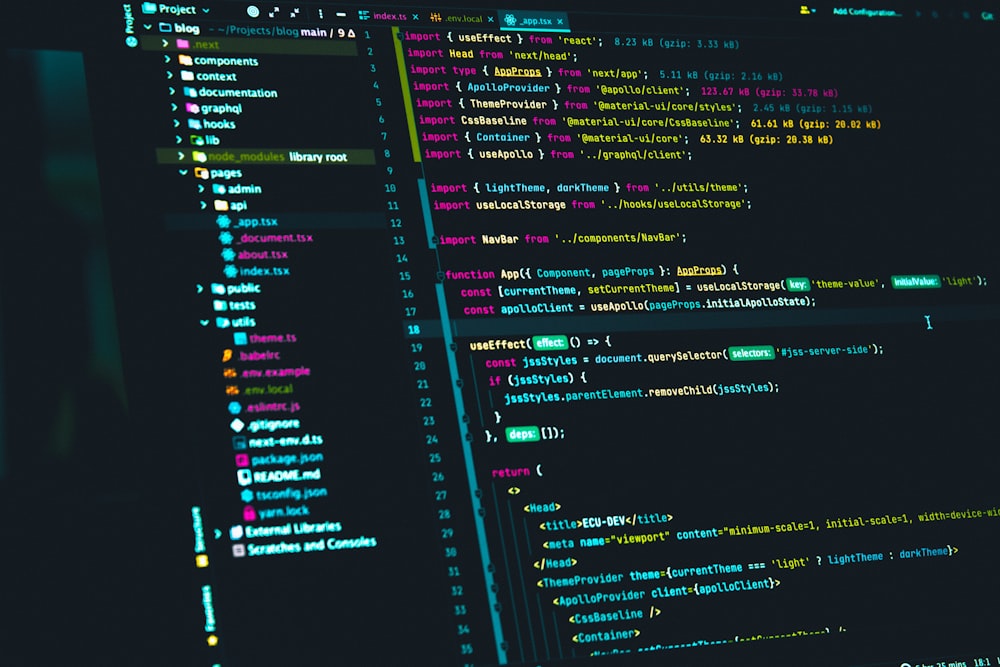

Software Quality Management is a process that provides the necessary level of Software Quality so that users are satisfied with its performance when they use the software. This process includes quality assurance, quality planning, and quality control.
It is essential for software development professionals to understand software quality management. It will benefit Software Quality Managers, Software Testers, and Software Developers.
Software Quality Fundamentals
Quality software refers to faultless or faultless software delivered on time and within a specified budget, meets requirements and expectations, and is maintainable.
Software Functional Quality
It refers to how well it meets a particular design based on functional requirements or features.
Software Structural Quality
It deals with the delivery of functional requirements, such as robustness or maintainability, and the handling of non–applicable requirements that support the degree to which software is produced correctly.
Software Quality Assurance
Software Quality Assurance (SQA) is the set of activities undertaken to ensure quality in software engineering processes that result in quality software products. These activities identify and evaluate the processes that produce outcomes. This includes strategy–oriented action.
Software Quality Control
Software Quality Control (SQC) is a set of activities used to ensure quality in software products. These activities focus on detecting defects in actual products manufactured. It includes development–oriented action.
Why Quality Matters?
We always say that a quality and reliable software product is delivered on time, according to the desired needs and expectations, and within the budget. It is also emphasized that the sustainability of the software product is also essential.
Environments Using Software Quality Assurance

Everyone participating in these events must deal with software quality problems (“defects”). However, severe quality problems lead to professional software development.
In large–scale projects, essential elements such as planning for the software, writing the codes, testing the written codes are not included in the software development process. Apart from these, it is necessary to control the workflow elements related to the management of the project, to follow the project budget, and to check whether the developed product meets the expectations of the customer, therefore to be in constant communication with the customer, the cooperation between the developer teams and the suppliers.
- Teamwork
Three factors often motivate the setting up of the project team rather than handing the project over to a professional:
Timetable requirements. In other words, the workload undertaken during the project period requires the participation of more than one person if the project is completed on time.
Professional support and willingness to review to improve project quality.
The need for diverse expertise to carry out the project.
- Contract Conditions
As a result of the commitments and conditions defined in the contract between the software developer and the customer, software development and maintenance activities must deal with:
A defined list of the software being developed and the functional requirements must be maintained for maintenance.
- Project budget.
- Project calendar.
Managers of software development and maintenance projects must invest significant effort in overseeing activities to meet the contract terms.
- Customer – Supplier Relationship
During the software development and maintenance process, the activities are under the supervision of the customer. Therefore, the project team must constantly collaborate with the client:
- Evaluate the change request.
- Discuss their criticism of various aspects of the project.
- Get their approval for changes initiated by the development team.
Such relationships often do not exist in software developed by non–software specialists.
- Interfaces with Other Software Systems

- Input interfaces through which other software systems transfer data to your software system.
- Output interfaces through which your software system transfers processed data to other software systems.
- In medical and laboratory control systems, metalworking equipment, etc., and input and output interfaces to the machine’s control panel.
It is essential to listen to all these development stages. Following these stages in the development process leads to customer satisfaction. A project is considered successful when the customer’s expectations and wishes are met. A successful business is accomplished if the developed product is completed on time and by the agreed cost and fulfills the desired functions completely. A successful project is achieved.
Software engineering aims to increase the number of successful projects completed on time and fulfill their duties in this style. Developers who attach importance to software engineering and apply the concepts and methods included in this field can get their expectations from the project. As a result, the project expectations will be met, and higher quality, reliable, and easy–to–maintain products will emerge.
A software product is made available after design, coding, and testing processes. Also, it needs maintenance after it is put into use. There are many ways (or models) of these processes. Example models used today:
- Big Bang
- Waterfall
- Sripal
- Agile
- Collaboration and Coordination with Other Software Teams
Moving projects, massive–scale projects, by more than one team is widespread in the software industry.
- Software and hardware development teams from other suppliers.
- The client’s software and hardware development teams are involved in the project’s development.
Mistakes Made During Application Development
Errors are inevitable in the software development process. They may not come up quickly, even when the developer is self-testing. It is impossible to develop software that does not contain any errors, but with proper error management, we can reduce errors.
Errors made during application development can be grouped as follows:
- Logic Errors
We can say that the program does not produce results different from the expected results and works in a separate order than expected. In addition, an incorrect algorithmic course designed during software development also leads to logical errors. Therefore, the algorithm must follow the correct path because logical mistakes are difficult to detect.
Such errors can always occur in the configuration of the software.
- Syntax Errors

- Mechanism of contextual help (after typing the keyword, a window appears in which the input processor’s full syntax or the procedure’s argument list is displayed).
- Automatic display of the list of elements (for example, after the name of the control, a list of all properties and methods appears, from which the desired properties can be selected).
- Runtime Errors
Runtime Errors occur when the program is run and the software is installed on the customer’s machine. For example, a function is generally coded on certain assumptions, but these errors occur because the desired conditions are not met when the user runs the program. Therefore, it is difficult to predict when such mistakes may happen.
Errors that occur at runtime contain different error numbers in other programming languages. It is easier to search and find the error with the error numbers. Thus, the cause of the error and answers can be found thanks to the error numbers;
These errors and their numbers can be specified in the manuals of some programming languages.
Architectural and Design Errors
Software designers make various mistakes when translating the customer’s wishes and
Requirements for the software. Some of the typical and common mistakes are as follows:
- Unclear the role of each software component (responsibility, communication).
- Incomplete and inadequate examination of the software to be developed.
- Unspecified primary data and data processing classes.
- Incorrect algorithms are used to fulfill requirements.
- Wrong job or processing order.
- Poor business process design.
Insufficient Review and Testing
The purpose of performing Software Reviews and testing is to detect software bugs and check whether these bugs have been eliminated. Software reviews are also known as “code view.” This “code view” stage can take a long time and time depending on the mistake made. In addition, when it is done with more than one developer, it disrupts other work that needs to be done.
Documentation Errors
Outdated or missing documentation for software used in an organization has been recognized as a common problem. Therefore, several development teams must take the time to prepare and review documents.
How to Avoid These Errors? How to Solve?
We all make mistakes. For example, we may forget to turn off the lights before leaving the house. Or, as a software developer, a flaw may be accidentally introduced into the newest software project the team is working on. While defects are inevitable during development, they can be detected, fixed, or avoided completely (even over a long period) before reaching a production environment. These methods are as follows:
- Performing Error Analysis
- Reviewing Continuous Changes
- Applying Code Fixes Frequently
- Performing Aggressive Regression Testing
- Thoroughly Analyzing Software Requirements




